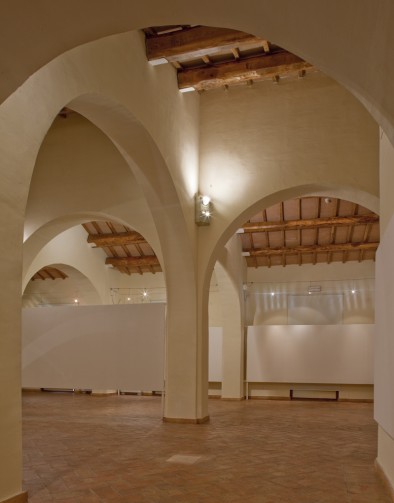Through the Rosello Gate one enters the street of the same name, at the beginning of which is the building, dating from the late 16th century, which until 1833 was used for the storage (ensierro) of grain. The large warehouse collected and stored for a year the important reserve of grain to be used in case of famine or siege.
The building consists of two mutually similar buildings, structured on two non-communicating floors, which have a different layout of spaces. The lower one is characterized by three vast halls with a rectangular floor plan covered by low barrel vaults, interconnecting, which are accessed through four open doors in the front elevation. In the adjacent Via delle Muraglie (Wall Street), a flight of stairs provides access to the halls of the upper floor, which features a wooden ceiling supported by large round arches that make it brighter and more airy thanks in part to the large rectangular windows open at the front and sides of the building. The Frumentaria was built in two phases, the first from 1597 to 1598 and the second from 1607 to 1608. It is currently the section of the City Museum designated as exhibition space for temporary exhibitions.









